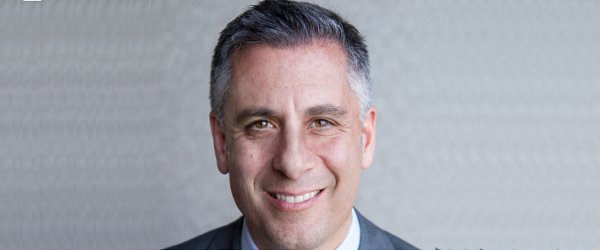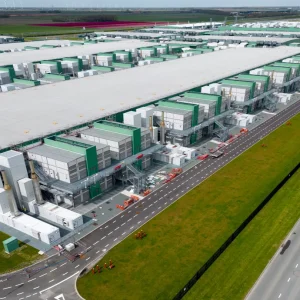
As Xerox president of large enterprise operations, Mike Feldman, is responsible for products, delivery of services and global responsibilities for managed print offerings with the global printing company.
The term Xerox has become synonymous with photocopying, particularly in the US. So as the company moves beyond the printed page to next generation managed print services and embraces the digital, it has met and overcome many challenges.
How is Xerox embracing next generation managed print services?
There is something that we rolled out over the last couple of months and defined it as a three stage strategy. The first stage is called assess and optimize. This includes full assessment capabilities from Xerox using best in class, prossess, people and tools from an acquisition of a London company called New Field IT. We give customers full details of their environment, current spend, utilization of devices and everything they want to know about their printing and imaging infrastructure.
From that, we can optimise a future state for them which almost always significantly reduces their cost and at the same time reduces their carbon footprint, making them more green as well.
From there, we typically move customers up to our second stage, which is called secure and integrate. This is where we’re integrating fully into the enterprise’s IT environment. Certainly in the first stage we connected everything to the network, that’s a given, but now we’re looking at the company’s IT infrastructure, including connecting to their active directory, LDAP systems to make sure we’re authorizing people to use the equipment in the most secure ways.
Usually at this stage we’re turning on things like better security and also mobility printing solutions and both those things have been very high on CIO’s security lists. They believe that these multifunction devices, because they are on a network, are almost like a server or a network node and they want to make sure all these devices are connected in a compliant way so they can pass audits and they can report when a device may or may not be within their corporate governance or structure. In this stage we’re also doing things around hooking to a customer’s help desk and helping them do things around print services and print queues.
The next stage we call automate and simplify. This is where we go about automating paper based processes for our clients. This is an area where clients have said they want our help first and foremost to help them print for less, but we also want to help them print less. At the third stage of automate and simplify we really do that. We start to automate these paper based processes by using workflow automation and content management solutions and we take paper out of the system so they can be more nimble and reduce costs.
As more people become aware of the environmental implications of printing and copying, what is Xerox doing to adapt to the evolving industry?
Green IT and environmental sustainability is extremely important to our clients, they know that when it comes to printing and imaging if they work smart with us, they can really have a significant impact on reducing their carbon footprint and reducing their electricity and power.
So we work with clients on a whole number of solutions. First and foremost, when we’re optimizing their fleet of devices, we’re almost always reducing their fleet. In some cases we cut up to half their number of devices by taking them out of the environment, this has a very positive impact on power usage as we have half the number of devices that were there originally and typically the newer devices are more energy efficient, so that very much helped.
We will work with our clients to turn on duplux printing because paper printing is usually one of the biggest offences when it comes to the carbon footprint. So we can reduce their paper by somewhere between 25 and 30%.
We also implement solutions like pull printing where we reduce paper again because nothing gets printed until a user goes up to the devices and authenticates themselves and tells the device to print their document. A lot of people who have that solution will print to a shared device that maybe is 20 feet away and they don’t go pick it up, so you see all those abandoned print jobs sitting on the printer that people never pick up and have to be thrown away. So we can save them that printed job, which will have a big impact on the environment.
How have handheld devices and digital storage management affected Xerox?
What we’re seeing is it continues to be an explosion of content, mostly unstructured data that is coming out. The explosion of social networks, mobility and the cloud means there is a lot of data available to people. Our enterprise clients are trying to make sense of all the unstructured data that’s out there and all of the content and they want solutions for managing that content as they were having context aware analytics for what people might be saying about their product or their brand. So there’s real storage and content management solution that Xerox is working with our client on. And then with everyone walking around with mobile devices, having access to all the data is one thing we work with our clients on and also the ability to print."
What is Xerox doing to enable printing from mobile and devices?
Phone and tablets that exist within all the various operating environments: our solutions allow customers for print on demand, from any device to any device through mobile print solutions in cloud and on premise, depending on preference. That can occur in the office, at home or on the road through our public print locations that we have for customers all around the world.
When talking about Xerox, people tend to think about copying and printing. What are you doing to expand your brand image?
We have an ad campaign running mostly in the US, with TV commercials on popular business shows like CNBC. The advertisement is all about reposition our bands to inform customers in the market place what Xerox is actually doing today. We still have a very strong heritage in printing and copying and it’s a big part of our business, but now more than 50% of all our revenues come from services.
We manage a process called EasyPass in NY and NJ which allows cars to go through toll booths without stopping to pay. We manage entire process from installation to billing. We work in healthcare around electronic medical records amongst other things. Even next generation manage print starts to get into things like digital alternatives and document management, so we are definitely moving beyond just the printed page.
What is the next stage for your digital document strategy?
We’re working on some really innovative software solutions that we will be announcing over the course of the next six months, that will help customers migrate from a paper world to a digital world and what they are producing today and how content is moving around to enable business processes.
I’m really excited to be at Xerox because of the leadership Xerox has around print services and managed print services. We’ve been acknowledged from Gartner in their Magic Quadrant and form IBC as the undisputed leader form a market share standpoint and are always at the top right of Gartner’s magic quadrant for our capabilities and strategies.






